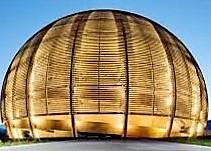Speaker
Description
Neutron-induced reactions play an important role in nuclear astrophysics in several scenario, such as Big Bang nucleosynthesis or heavy-element production via the s or r neutron capture processes [1]. To overcome some of the experimental difficulties typical of direct neutron cross section measurements, in the last years, the possibility of using the Trojan Horse Method (THM) to study neutron-induced reactions has been investigated and successfully applied [2-4].
In detail, the 14N(n,p)14C process is among the key reactions intervening in the s-process nucleosynthesis. Indeed, 14N is very abundant since it is a dominant product of the hydrogen-burning in the CNO cycle and, because of the relatively high cross section, can efficiently trigger the (n,p) reaction acting as a strong neutron poison in the reaction chain to heavier elements [1]. Moreover, 14N also impacts the 19F nucleosynthesis through the nuclear chain 14N(α,γ)18F(+)18O(p,α)15N(α,γ)19F. Thus, the 14N(n,p)14C reaction plays a key role because of its double effect of removing neutrons and producing protons [1]. In addition, the protons can trigger the 18O(p,α)15N or the 13C(p,γ)14N reactions, being the last one in competition with the 13C(α,n)16O reaction [1,5].
Here, we report on the recent results of the indirect 14N(n,p)14C reaction cross section measurement by applying the THM to the quasi-free 2H(14N,p14C)p reaction. The 14N+2H experiment was performed at INFN-LNS by using a 50 MeV 14N beam provided by the TANDEM accelerator. The preliminary results show the population of several states of the intermediate 15N nucleus and, in particular, those at sub-threshold energies for the astrophysically relevant 14N(n,p)14C reaction. The details of the experiment and the corresponding THM data analysis will be discussed and compared with the direct data available in literature.
[1] C. Iliadis, Nuclear Physics of Stars Wiley-VCH Verlag, (2007)
[2] A. Tumino et al., Ann. Rev. Nuc. Part. Science, 71, 345-76, (2021)
[3] G.G. Guardo, et al., Phys. Rev. C 95, 025807 (2017)
[4] M. Gulino et al., J. Phys. G: Nucl. Part. Phys., 37, 125105, (2010)
[5] S. Cristallo et al., Astroph. J. 859, 14, (2018)
